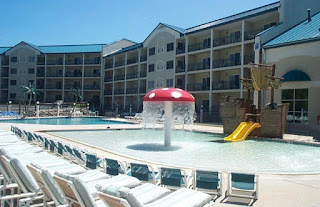 |
| Congested city |
 |
| Slum Area |
1) The city gained much fame for her glorious past
The city for her monumental grandeur vast
For her clear lakes, green parks and coastal strand
Affluent with huge malls and restaurants grand
The city proud of her many firms and commerce abroad
Like lifeless machines men rushed and struggled hard.
.
2) Spurred by development the city grew by leaps and bounds
Ambition devoured every inch of ground
Sparing no lake or park wherever found
Even temples lost their hereditary ground
The lanes grew wild like poisonous weeds
Uncontrollable like human greed.
 |
| Industrial Pollution |
 |
| Dried up River |
3) The lakes displaced by residential flats
The fields converted to commercial plots
The dense green trees in thousands lost
To build highways at fabulous cost
Deprived of vast surrounding space
Old monuments seen in their declining days.
4) The city untamed like a forest spread
Flouting all rules with no sense of dread
With slums and gutters in spaces between
The city lost her natural splendor and sheen
Pledging her purity for material wealth
Gripped in fangs of pollution, a gradual death.
 |
| Flooded Streets No.2 |
 |
| Flooded Streets No.1 |
 |
| Saviors of flood victims |
 |
| Congrats ! Volunteers ! |
5) Caught in the continuous stormy blast
The city shook like a ship in tempest caught
For days and days floods rose like raging hell
Neck-deep in waters houses fell
The lakes leapt out of their constricted bounds
Highways became lakes with no trace of ground.
6) With all their household washed away
People spent days with dreadful dismay
Surrounded by water, yet not fit to drink
Sans food and clothes, too dazed to think
The city wore a deserted, dreary sight
The authorities stood helpless, a pitiful plight.
7) All shops shuttered, banks closed and power cut
No means of transport and no one to protect
Even rich folk levelled down to common lot
Amidst a deluge of waters caught
Looked up to the sky with hungry eyes
To grab food packets air-dropped from skies.
8) The law of jungle prevailed around and everywhere
The thieves looted and none to care
The selfish traders hiked prices sky-high
Beyond the reach of poor and no supply
Is this the goal of thriving cities great ?
Built without vision and planning, a sordid state !
9) Dirt covered city with tons of slush
All things despoiled by stormy gush
Who can compensate their losses huge ?
A shocking disaster left by this deluge
Yet charity came to rescue with humane touch
Wiped tears and helped the sufferers much.
 |
| Green gardens and lakes |
 |
| Blue hills and rivers |
10) Let us give space to resources of Nature
On them depends our existence and future
Let us fill our cities with trees and gardens green
Let us save water and our lakes serene
Let us curb pollution from every side
Our future life only we have to decide.
************************
Note : This poem ends on a note of warning to our prospering cities which overlook deliberately the dire consequences of
overindustrialization, overurbanization, and over-consumption of natural resources. This indiscriminate use and wastage of natural resources usher in a very dreadful state of human life in future where people have to die like dinosaurs due to lack or shortage of basic things like pure water, pure air and unadulterated food.
Pollution and over-consumption are the twin evils of modern life. In the name of luxurious life we are pledging precious Nature to our selfish and short-sighted goals. A day will not be far off when Nature will boomerang on our disorderly ways and make us suffer for what we have done in a thoughtless and undisciplined manner. So let us at least curb our evil tendencies and contribute our mite to control pollution and develop proper risk and disaster- management strategies to face the perils in future. We should leave ample space for trees, lakes,parks,and historical monuments and temples to exist without being polluted. We should maintain proper roads and drainage system. We should reduce use of artificial products and chemicals.
Simple life in harmony with Nature is the only suitable solution for our modern city life.
????????????????????????????
4th January, 2016 Somaseshu Gutala




















































